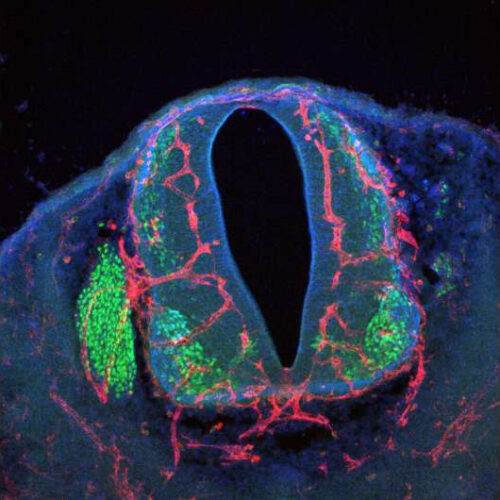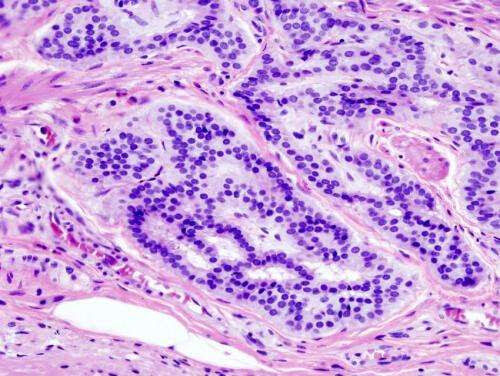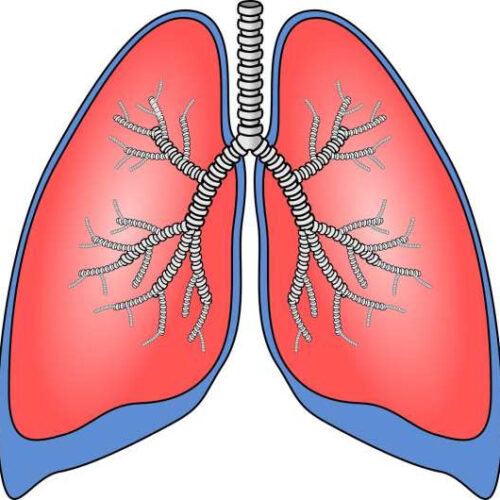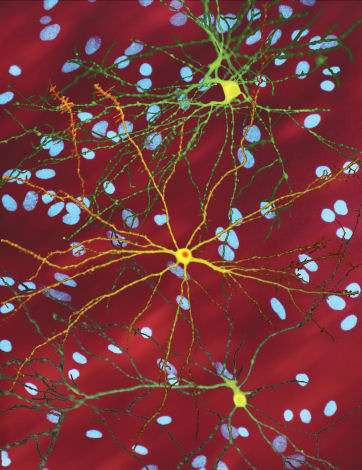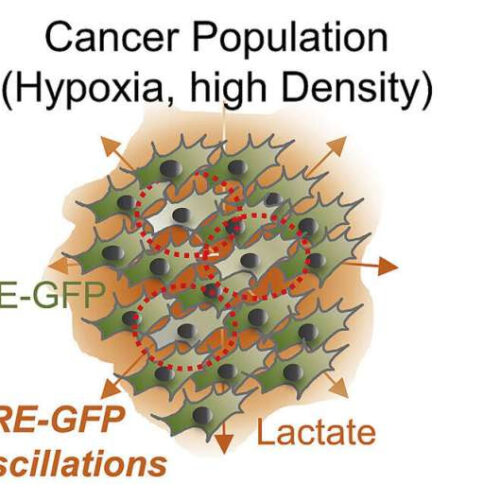by University of Bonn Blood vessels (red) migrate in a disorganized manner to regions with motor neurons (green). Credit: AG Ruiz de Almodovar/University of Bonn Nerve cells need a lot of energy and oxygen. They receive both through the blood. This is why nerve tissue is usually crisscrossed by a large number of blood vessels. But...
Category: <span>Genetics</span>
Humans continue to evolve with the emergence of new genes
Researchers have been looking into the evolutions of human genetics. HECTOR RIO/AFP via Getty Images Researchers have been looking into the evolution of human genetics. They say they have discovered that human genes have continued to change after the evolutionary split from primate ancestors. They acknowledge that genetic research is complicated and more study is...
Large-scale study finds new genetic risk factors for colorectal cancer, paving the way for better screening, prevention
by Fred Hutchinson Cancer Center Cancer — Histopathologic image of colonic carcinoid. Credit: Wikipedia/CC BY-SA 3.0 A comprehensive analysis of more than 100,000 colorectal cancer (CRC) cases, led by researchers at the Fred Hutchinson Cancer Center in Seattle and 200 scientific collaborators worldwide, has identified more than 100 new genetic risk factors strongly linked with...
Genome sequencing reveals underdiagnosed cause of long-term lung condition
by University of Southampton Credit: Pixabay/CC0 Public Domain Southampton clinical researchers, working as part of a UK team, have shed new light on causes of bronchiectasis, a long-term lung condition currently effecting more than 200,000 people in the UK. People who have bronchiectasis experience a persistent cough, shortness of breath and recurring infections because their...
Research identifies potential genetic cause for MIS-C complication following COVID-19 infection
CLEVELAND CLINIC New research findings have revealed an underlying genetic cause for why some children who have had COVID-19 infection develop Multisystem Inflammatory Syndrome in Children (MIS-C), a rare but potentially life-threatening disease. The findings are the first potential genetic cause identified for MIS-C, a disease that typically occurs about four weeks after COVID-19 infection and...
New targets in the fight against pancreatic cancer
TOKYO MEDICAL AND DENTAL UNIVERSITY IMAGE: TOP, SETD1A, DIRECTLY RECRUITED TO THE RUVBL1 PROMOTER, ENHANCES RUVBL1 GENE EXPRESSION BY INCREASING H3K4ME3 LEVELS IN PANCREATIC CANCER CELLS. BOTTOM, HIGH CO-EXPRESSION OF SETD1A AND RUVBL1 CAN PREDICT WORSE PROGNOSIS THAN OTHERS. CREDIT: DEPARTMENT OF MOLECULAR ONCOLOGY, TMDU Researchers from Tokyo Medical and Dental University (TMDU) uncover an...
Four genes identified as heightening risk of suicidal thoughts, actions
by Duke University Medical Center Credit: CC0 Public Domain A large study of military members led by researchers at Duke Health and the Durham VA identified four genes that are linked to an increased risk of suicidal thoughts and behaviors. While more work is needed to determine whether identification of the genetic markers might lead...
New study reveals hidden genetic anomaly behind common late-onset cerebellar ataxia
by University of Miami Leonard M. Miller School of Medicine A montage of three images of single striatal neurons transfected with a disease-associated version of huntingtin, the protein that causes Huntington’s disease. Nuclei of untransfected neurons are seen in the background (blue). The neuron in the center (yellow) contains an abnormal intracellular accumulation of huntingtin...
Reconsidering oxygen’s role in growth of tumors
by Yale University Graphical abstract. Credit: Cell Systems (2022). DOI: 10.1016/j.cels.2022.11.003 Yale researchers have made a discovery that changes conventional thinking about the role that oxygen plays in the growth of tumors—an area of cancer research that has been intensely studied in recent years. The results, from the lab of Andre Levchenko, the John C. Malone Professor...
Scientists map genetic evolution of chronic lymphocytic leukemia to Richter’s syndrome
by Dana-Farber Cancer Institute Credit: Pixabay/CC0 Public Domain Every year, up to 1% of patients with chronic lymphocytic leukemia (CLL), a slow-growing blood cancer, have their disease transform into a far more aggressive cancer, a form of lymphoma known as Richter’s syndrome. For the most part, the genomic changes that underlie this metamorphosis and push...

